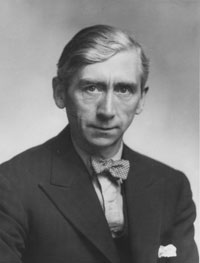In an era where the worlds of literature and fashion often exist in isolated silos, the connection between the venerable writer Piers Paul Read and the iconic fashion editor Anna Wintour serves as a fascinating case study. The interplay between these two seemingly disparate realms — the highbrow of literature and the high-octane pulse of fashion — may evoke skepticism, yet it challenges us to reconsider the cultural dialogues at the intersection of these two creative forces.
Piers Paul Read is a name that resonates within literary circles, celebrated for his incisive novels and thought-provoking essays. His works often tackle profound themes, from morality to human resilience, embedding a rich tapestry of history within fictional frameworks. Conversely, Anna Wintour, the formidable editor of Vogue, stands as a titan of the fashion industry, wielding influence over aesthetics far beyond the glossy pages of her magazine. She isn’t merely a tastemaker; she orchestrates the very narratives that shape modern fashion sensibilities.
Now, you might be wondering: how do these two individuals intersect? Is there more than mere coincidence in their shared appreciation for storytelling, whether through words or fabrics? Take a moment to reflect on how literature often divulges the inner workings of our psyche, much like fashion articulates the outer shell of our identity. One could assert that both are forms of expression, painting portraits of humanity in their respective mediums.
Read’s novels, characterized by their vivid characterizations and intricate plots, often evoke the same visceral response that a stunning fashion runway does. Each detail in his narratives is meticulously crafted, akin to the draping of a couture gown. There’s an elegance in his prose, making the emotional landscapes of his characters palpable. On the other hand, Wintour’s vision at Vogue is a masterclass in curating narratives through the lenses of desire and aspiration — fabrics, colors, and styles coalesce to tell stories of contemporary culture.
Moreover, both figures challenge conventions within their fields. Read’s willingness to traverse genres, from historical fiction to thrilling journeys, defies the traditional categorizations assigned to literary figures. His bold narratives invite readers to engage not just with the text but to reflect on their own moral compasses. In a similar vein, Wintour has transformed the fashion narrative. With her unwavering commitment to innovation, she dares to redefine beauty standards and societal expectations, making fashion an influential articulation of identity and voice.
As we delve deeper, let’s consider the role of influence. Read’s writings have the potential to shape thought; they inspire discourse on humanity’s frailties. Yet, Wintour’s influence is equally profound, shaping public perception of fashion and its intersection with broader societal trends. When witnessing a collection unfold on the catwalk, one can feel the throbbing pulse of culture, each piece potentially imbued with social commentary — each stiletto an understated manifesto on self-expression. How can one dismiss the notion that both have curated lenses through which we observe and interpret our world?
It’s imperative also to address the artistic cross-pollination occurring between literature and fashion. Wintour, with her affinity for literary arts, has often championed writers by integrating their narratives into fashion’s debutante balls. She has fostered collaborations that marry the visual dexterity of high fashion with the cerebral intricacies of the written word. In numerous special issues of Vogue, authors have graced the pages, intertwining personal reflections alongside striking photographs — stories told not only in ink but through fabric and style.
This leads us to ponder: could we envision a world where literature and fashion converge even more cohesively? The avant-garde brand that integrates storytelling into its marketing strategy or a novel that unfurls like a fashion show, chapters pivoting on seasonal aesthetics? Could the two trajectories unify to create an aesthetic consciousness that encompasses both the gravitas of literary exploration and the ephemeral thrill of wearable art? The mere thought instigates a rush of creative reverie.
In an industry rife with fleeting trends, the enduring legacy of figures like Read and Wintour reminds us of the deeper currents flowing beneath the surface. Literature, with its timeless allure, can evoke nostalgia, challenge societal norms, and question the status quo. Whereas fashion, often dismissed as superficial, acts as a vibrant tapestry of identity negotiations and cultural expression. Both are vital for a vivacious dialogue regarding who we are and how we wish to be perceived.
To draw upon the undeniable synergy of these two worlds, one must actively engage in the exploration of both. Seek out literary works that inspire visual thinking and fashion statements that provoke thought. Attend literary readings with an outfit selected not just for style, but for the narrative it tells. With this in mind, challenge yourself: how can your wardrobe echo the stories that resonate within you, and how can literature inspire your sartorial choices? This exploration transcends mere aesthetic appreciation; it becomes a dialogue between the written word and visual expression, an ongoing narrative that each of us contributes to.
The phenomenon of Piers Paul Read and Anna Wintour isn’t mere coincidence — it’s a call to transcend boundaries. The cultural landscape is shaped not just by individual expressions, but by the collisions and collaborations that invite us to redefine our understanding of art and style. Dive into this interconnected world. Your journey awaits.

